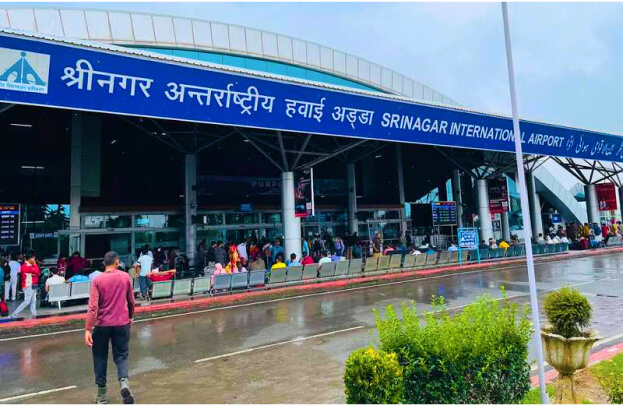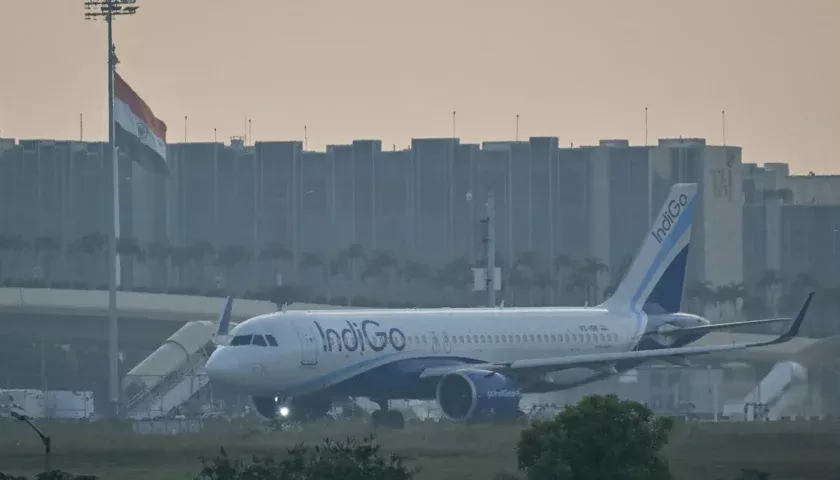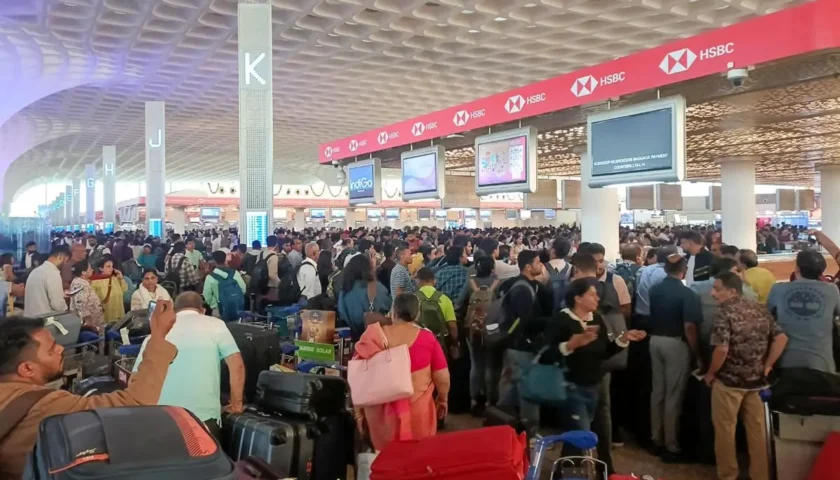From Discontent to Disruption: Can User Power Reshape India’s Telecom Landscape?
By: Javid Amin
India’s mobile data landscape is experiencing a seismic shift, and the tremors are shaking the very foundation of the industry. In a synchronized move, Reliance Jio, Bharti Airtel, and Vodafone Idea, the big three telecom giants, have orchestrated a wave of significant price hikes on data plans. This strategic alignment has ignited a firestorm of user frustration, playing out on social media platforms like a digital protest symphony. Hashtags like “#JioBoycott” and “#AirtelThanksButNoThanks” blare like angry trumpets, while “#BSNLKiGharWapsi” (Hindi for “BSNL, Welcome Back Home”) emerges as a surprising countermelody.
The Price Hike Symphony: A Chorus of Discontent
The near-identical price increases across the board have left many users feeling like instruments out of tune. The era of aggressive price wars and disruptive strategies that fueled India’s digital revolution appears to be over. Gone are the days of “unlimited data” and “crazy good value,” replaced by a sense of betrayal and disenchantment. Social media platforms have become the battleground for user frustration, with memes mocking the price hikes and comments expressing anger and disappointment.
Jio’s Disrupted Lullaby: From Sweet Dreams to Harsh Reality
Jio users, initially lulled by the company’s disruptive pricing strategies that democratized data access, now face a harsh reality. Complaints about the sudden price rise and the removal of “unlimited 5G” options from some affordable plans have dominated online discourse. The “#JioBoycott” trend, with over 40,000 posts, reflects the disillusionment and anger felt by many Jio subscribers who perceive this as a betrayal of the company’s initial commitment to affordability.
The Unexpected Contender: BSNL Emerges From the Backstage
The price hike has inadvertently opened the curtains for a potential comeback player – BSNL, the state-owned telecom company. #BSNLKiGharWapsi is a trend gaining significant traction, with over 45,000 posts on social media. BSNL’s significantly lower data plan prices are proving to be a major draw for cost-conscious users, even if it means sacrificing the allure of 5G connectivity for some.
The Numbers Game: A Balancing Act Between Affordability and Cutting-Edge Technology
The stark price difference between the telecom companies is a key factor influencing the user symphony. Consider the popular 2GB daily data plan for 30 days: BSNL offers it at a much lower price point of Rs 199 (UP West Circle), compared to Airtel’s Rs 379 and Jio’s Rs 349 (with a shorter validity of 28 days). This significant difference resonates with a large segment of users who prioritize affordability over having the latest network technology. It’s a trade-off between a basic smartphone experience and the bells and whistles of 5G.
Beyond the Outrage: Understanding the Telecom Industry’s Perspective
While user outrage is a natural reaction, it’s important to consider the telecom companies’ perspective, which is often drowned out in the cacophony of online anger. They cite the need to maintain a healthy Average Revenue per User (ARPU) to justify the price hike. These funds, they argue, are crucial for keeping the orchestra playing – for network upgrades, spectrum acquisition, and ensuring a return on capital invested. Airtel, in its official statement, emphasized the need for a higher ARPU to “enable substantial investments required in network technology and spectrum and offer a modest return on capital.”
The Road Ahead: Navigating a Complex Crescendo
The current situation presents a complex challenge for the telecom industry. Price hikes, while necessary for long-term infrastructure development, can alienate customers and stifle market growth. Finding a sustainable balance between profitability and user satisfaction will be key for the telecom companies to navigate this critical juncture. They need to ensure they are not playing a one-sided tune, but rather a harmonious composition that caters to diverse user needs.
A Multi-Pronged Approach: Regaining User Trust – A New Movement
The telecom companies need to conduct a full-fledged user engagement symphony. Here are some key instruments they can utilize to regain user trust:
- User Retention Strategies: The telecom companies might need to consider offering additional benefits or value-added services alongside data plans to incentivize user retention. This could include bundled subscriptions to popular streaming platforms, loyalty programs with rewards for consistent usage, or data rollover options that prevent users from feeling like they’re “wasting” their data.
- Transparency as a Cornerstone: Clearly explaining how the additional revenue generated from the price hike will be utilized for network improvement and future investments can help mitigate user anger and foster a sense of partnership. This could involve regular reports on infrastructure upgrades, network expansion plans, and technological advancements being made.
The Human Cost of Price Hikes: A Discordant Note in the Symphony
While data plans and price hikes are often discussed in terms of statistics and market trends, it’s important to acknowledge the human cost associated with these decisions, which can disrupt the rhythm of many lives.
- Students and Online Learning: For students increasingly reliant on affordable data plans for online learning platforms and educational resources, the price hike can create a significant barrier to access. Imagine a student in a rural area, struggling to keep up with online classes because they can’t afford the increased data costs. This widens the educational equity gap and hinders efforts towards digital inclusion.
- Small Businesses and Entrepreneurs: Many small businesses and entrepreneurs depend on mobile data connectivity for communication, marketing, and online transactions. Price hikes can squeeze their already tight budgets, impacting their ability to compete and grow. This can stifle innovation and hinder the growth of the local economy.
- The Digital Divide Widens: With increased data costs, the gap between those who can afford reliable internet access and those who cannot widens. This can exacerbate existing social inequalities and make it harder for individuals to access essential services, government information, and employment opportunities online.
The Potential for Regulatory Intervention: A Harmonious Resolution
The government has a crucial role to play in ensuring a healthy and competitive telecom landscape. Here are some potential areas for regulatory intervention to create a more harmonious symphony:
- Promoting Fair Competition: Measures could be implemented to prevent predatory pricing practices and ensure a level playing field for all telecom operators. This could involve stricter monitoring of pricing structures and preventing anti-competitive behavior.
- Focus on Rural Connectivity: Policies can be designed to incentivize telecom companies to invest in infrastructure development in rural areas. This could involve tax breaks, subsidies, or spectrum allocation specifically targeted towards rural areas, fostering broader internet access across the nation.
- Data Price Transparency: Regulations requiring clear and transparent communication of data plan details, including hidden charges, data rollover policies, and speed throttling practices, can empower users to make informed choices. This would require telecom companies to be upfront and honest about their pricing structures, fostering trust with users.
The Power of Collective Action: User Advocacy and Consumer Choice – A New Chorus Emerges
Consumers are not without power in this scenario. Here’s how users can leverage collective action and informed choices to create a new, more user-centric chorus:
- User Groups and Advocacy Platforms: Joining user groups or online forums dedicated to telecom issues can empower individuals to share concerns and advocate for change. These groups can be a powerful voice for users, lobbying for regulations and pressuring telecom companies to offer better deals.
- Data Consumption Awareness: Encouraging users to track their data consumption patterns and identify plans that best suit their needs can help them optimize their spending. There are various apps and tools available to help users monitor their data usage and identify areas where they can potentially cut back.
- Porting Made Easy: Simplifying the mobile number portability process can empower users to switch providers if they are unhappy with current services or pricing structures. A streamlined porting process would allow users to easily switch to a competitor offering better deals, putting pressure on telecom companies to remain competitive.
The Road to a Sustainable Future: Collaborative Solutions – A New Composition
The current data price hike saga presents an opportunity for a collaborative approach between the government, telecom industry, and users. Here are some key steps towards a sustainable future, where all stakeholders can play their part in creating a harmonious composition:
- Open Dialogue: Fostering open dialogue between all stakeholders is crucial for understanding concerns and developing solutions that address the needs of various user groups. This could involve regular meetings, workshops, and public consultations to ensure everyone has a voice at the table.
- Innovation in Pricing Models: Exploring innovative pricing models, such as tiered plans with varying data allowances and speeds, pay-as-you-go options, or data sharing plans for families, can provide users with greater flexibility and control over their spending. This would give users more choice and allow them to select plans that best fit their individual needs and budget.
- Focus on Network Quality: Ensuring consistent network quality and addressing issues like call drops and slow internet speeds are critical factors in retaining user trust and satisfaction. Investing in network infrastructure upgrades and maintenance is essential to ensure users have a reliable and enjoyable mobile data experience.
Conclusion: A Brighter Digital Future for India – A New Movement Takes Center Stage
The data price hike saga underscores the need for a new movement in India’s telecom landscape – a movement towards a user-centric approach. By prioritizing user needs, fostering innovation, and ensuring regulatory oversight, a brighter digital future can be achieved. This future will be characterized by:
- Affordable and Reliable Data Access for All: This means striking a balance between profitability for telecom companies and affordability for users. The government and telecom industry need to work together to create policies and pricing structures that make mobile data accessible to everyone, regardless of income level.
- Empowering Individuals and Businesses: Affordable data access empowers individuals to participate in the digital economy, access educational resources, and connect with loved ones. For businesses, it allows them to compete, grow, and reach new customers.
- Bridging the Digital Divide: By ensuring everyone has access to affordable data, the gap between those who have access to the internet and those who don’t can be narrowed. This will create a more equitable society and unlock new opportunities for all.
A Call to Action: Join the Movement
The data price hike is a wake-up call. It’s a call to action for users to become more informed about their data consumption, advocate for their rights, and hold telecom companies accountable. It’s a call to action for the government to implement regulations that promote fair competition and transparency. And it’s a call to action for the telecom industry to innovate, prioritize user needs, and invest in network infrastructure.
By working together, users, the government, and the telecom industry can create a brighter digital future for India, a future where everyone can benefit from the power of mobile data.




